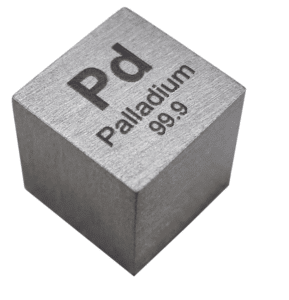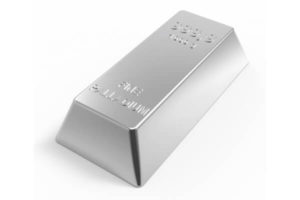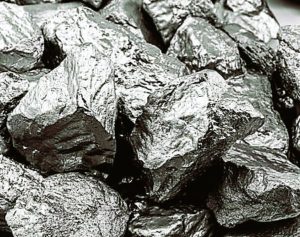 Economic Benefits
Economic Benefits
Palladium is a commodity that has no substitute.
Palladium is an irreplaceable element of great value for modern technology and industry.
This means that the demand on palladium, alongside its price, depends on the world economy, as well as demands on gold, nickel, silver, platinum and other metals.
Palladium’s significance to the global economy makes it a good investment.
The Price of Palladium Over Time
Palladium’s price changes in times, when other metals like silver or gold are stable for a while (during the crisis).
That is why it is not recommended to invest in palladium for short-term investors; it should be considered more reliable as an investment over five to ten years.
Palladium’s Supply and Demand: Unbalanced Market
Around 86% of palladium production comes from South Africa and Russia, which together annually produce more than 1 million ounces; this is another important element in the value of palladium on the market.
As for demand, around 60% of it is produced by the automotive industry, where palladium can be found in catalytic converters.

The Possibility of a Palladium Bubble
There is a possibility that the price of palladium has been going up due to speculation and enormous demand, which makes it unstable at times and can cause panic among investors – this is what we’ve seen last year.
It is important to note that the price of palladium has been able to stand such a significant increase.
Where does the precious metal Palladium come from?
Palladium is a chemical element with the atomic number 46 and the symbol Pd.
A silver-white transition metal, it has the chemical properties of platinum and rhodium.
The United States is the world’s principal source of palladium.
In 2015, it accounted for 28% of global mine production. Russia and South Africa were responsible for 17% and 15%, respectively.
According to a United States Geological Survey (USGS) report, one out of every ten cars sold in America contains palladium, a metal that is nearing depletion in the earth’s crust.
It has been used for decades to catalyze reactions, such as those in gasoline-powered cars, and demand has increased in countries like China and India.
How is palladium made?
Palladium is a silvery-white metal discovered in 1803 by William Hyde Wollaston from the slag of lead smelting.
Nowadays, most palladium is used as an auto catalyst for the hydrogenation of olefins (organic chemical compounds containing one or more double bonds between carbon atoms) and the dehydrogenation of alkanes (organic chemical compounds containing only single bonds between carbon atoms).
Like rhodium and platinum, it is also used as a catalyst for both hydrogenation and dehydrogenation.
What are Palladium Uses?
Palladium has been used as a precious metal in jewelry since 1939, as an autocatalyst in the chemical and petroleum industries since the 1960s, and as a catalyst for hydrogenation and dehydrogenation since the 1970s.
The Benefits of Investing in Palladium
Palladium is a member of the Platinum Group Metals (PGM) family, along with iridium, rhodium, osmium and platinum.
All members of the PGM family are rare metals that are found in relatively small quantities.
Palladium is the least abundant metal out of all five elements.
Other than its role as a precious metal used in jewelry, palladium’s main use comes from its ability to enhance other metals.
Palladium is a catalyst for many industrial uses, making it a key component in the production of nitric acid, and an alternative to platinum as a fuel cell catalyst.
Rising demand from both the industrial and automotive sectors has helped palladium outpace most other metals on major indexes.
In fact, demand for palladium was so strong that the market was expected to break records by reaching 30 million ounces of supply.
Although the relationship between palladium’s price and platinum is fairly low, analysts believe that both metals are closely tied together due to their similar uses in industry.

Investing in Palladium Coins or Bars
Palladium bullion such as 1oz palladium coins and palladium bars, offers investors exposure to the precious metal despite its low price relative to gold and silver.
Other benefits of owning physical palladium include:
Low premiums:
Buying 1 ounce palladium coins and bars helps you avoid mark up, so you could get 1 ounce of palladium for a much lower price than buying 100 troy ounces of palladium.
If the spot price stays relatively stable, your loss will be smaller when selling palladium coins or bars.
Easy to sell:
1 ounce palladium coins are accepted by most dealers in the industry, making it easy to sell palladium coins or bars in case of emergency.
Low Capital Investment
Buying 1 ounce bullion ensures that you get enough exposure to palladium’s price movements while spending a relatively small amount of money on your investment.
Companies Involved in the Palladium Market
The largest companies involved in the palladium market include:
Johnson Matthey Ltd. (USA) Johnson Matthey is one of the largest refiners and fabricators of precious metal products.
The company has three primary business units: Precious Metals, Catalysts and Fine Chemicals.
Palladium is used extensively in the automotive industry to control emissions and help protect exhaust systems from corrosion.
Palladium is also an important catalyst for the chemical and pharmaceutical industries, especially in the production of nitric acid and ammonia.
Below are the Top 4 Precious Metal firms that we have chosen, as being amongst the most reputable Gold IRA companies in the industry.
Click here to read our reviews

|
The Bottom Line
Palladium Is The Metal of the Future
Despite certain market speculations, Palladium continues its growth on the market and no one can deny that investment in palladium brings good results.
Despite fluctuations on the market due to its future predictions, palladium is the metal of the future, which makes it a great value to invest in.



